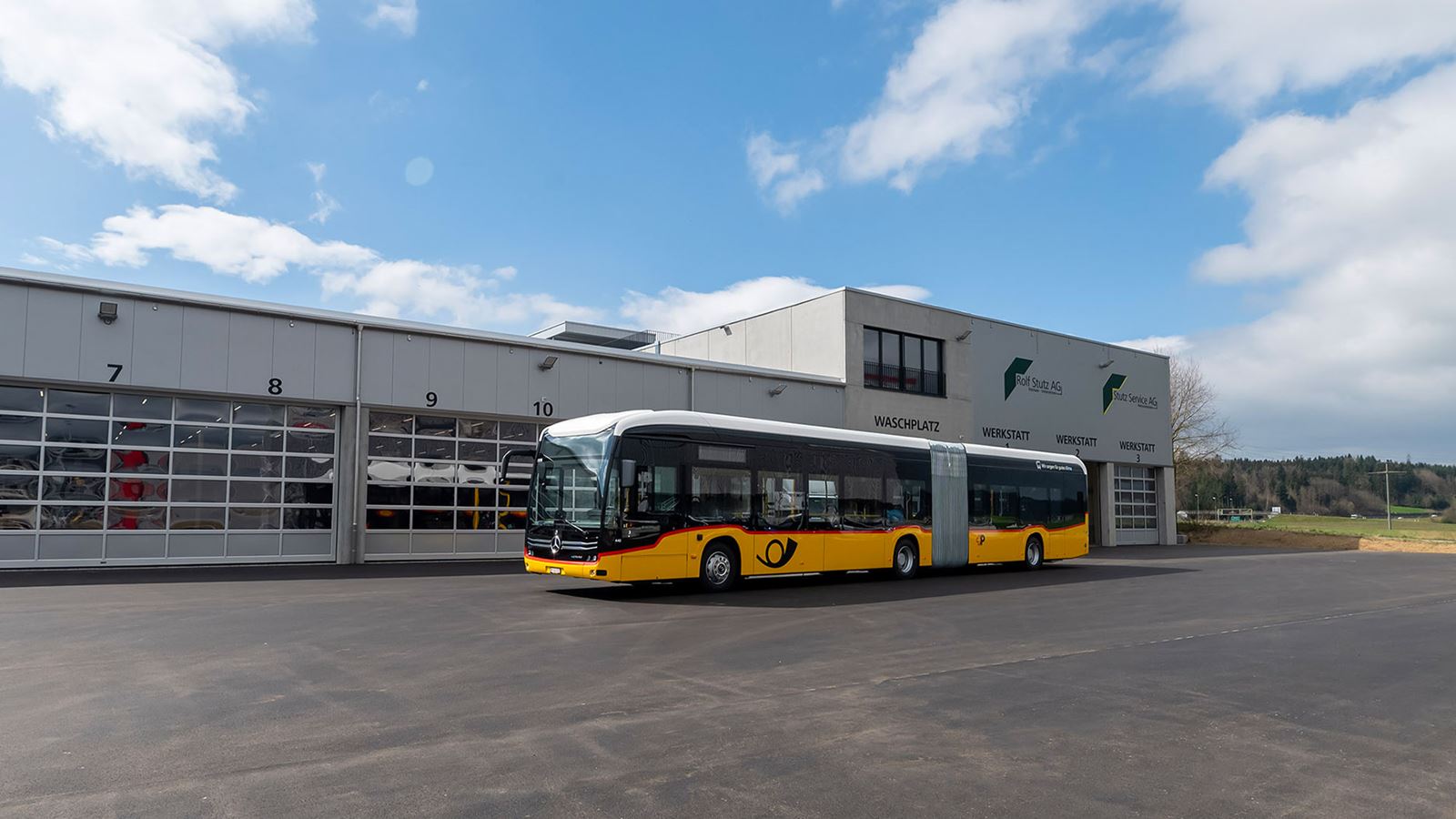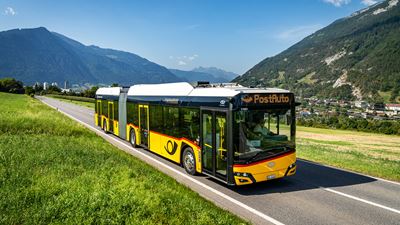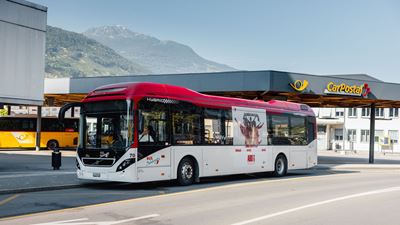Press releases
The first e-Postbuses in Knonauer Amt will be on the road soon
PostBus is pushing ahead with the electrification of its fleet, now also in the Zurich Transport Network (ZVV). As of April, the first battery-powered Postbuses will take to the roads in Knonauer Amt. For this purpose, a newly built garage in Affoltern am Albis is fully designed to meet the needs of electric mobility in public transport. PostBus operator Rolf Stutz AG inaugurated the garage at the end of March.
Rich Content Section

In mid-April 2025, PostBus is putting two electric Postbuses into operation in Knonauer Amt. The vehicles belonging to PostBus operator Rolf Stutz AG in Affoltern am Albis are the first battery-powered PostBus buses in the Zurich Transport Network (ZVV). By the end of 2025, an additional 11 e-Postbuses will gradually be added to the fleet. All 13 new battery-powered Postbuses are 18-metre-long articulated buses with a range of at least 250 kilometres. With each diesel vehicle replaced, PostBus can save around 30,000 litres of diesel per year, helping to reduce CO2 emissions as a result.
Initially, the e-Postbuses won’t operate on fixed routes but will be deployed flexibly on various connections with different elevation profiles and route lengths. By operating the buses in different areas, PostBus managers will be able to gain valuable experience for operating the constantly growing e-Postbus fleet.
To accommodate the e-Postbuses, Rolf Stutz AG had a new garage built in Affoltern am Albis that is fully designed to accommodate electric mobility in public transport. It can house 26 articulated buses within an area spanning 2,033 m2 and also features a workshop area and an outdoor area. The batteries of the new Postbuses will be charged in the depot – generally overnight, but also in the daytime during longer breaks. 12 charging points are currently available during an initial phase, increasing to 26 in the final phase.
PostBus operator Rolf Stutz AG generates some of the electricity itself by means of a photovoltaic system on the roof of the newly built garage. Around 1,070 solar panels generate a total annual output of 455,000 kWh, which is enough to power approximately 100 single-family homes with an average electricity consumption.


